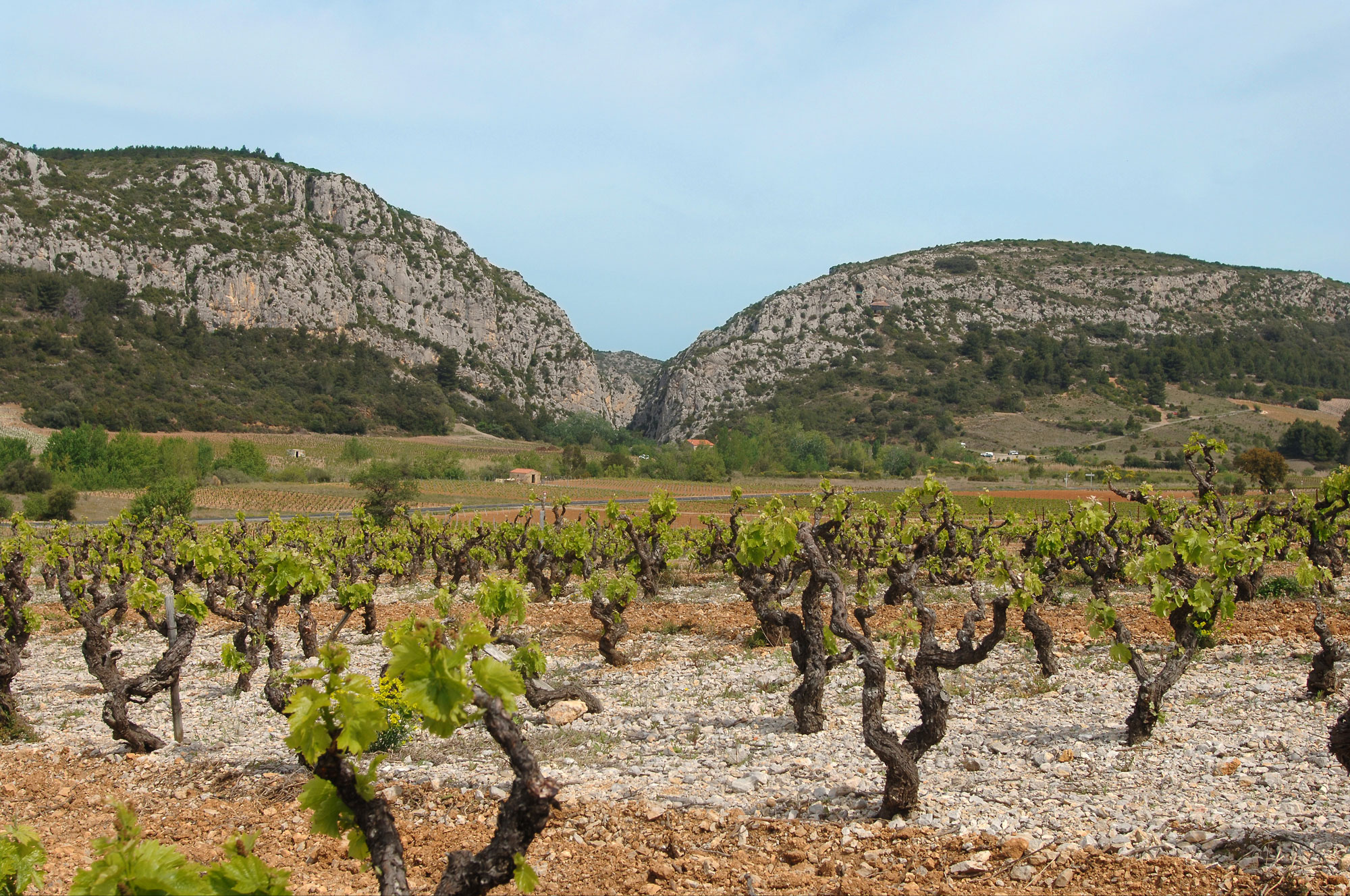Côtes du Roussillon Villages: stronger together
In a region known for its deeply flavoured and structured wines, Côtes du Roussillon Villages sets the benchmark with some of Roussillon’s most complex and distinctive reds. But far from being a homogenous appellation, Côtes du Roussillon Villages offers a patchwork of vineyards, varieties and styles, delivering not only power but also elegance and lively fruit. It’s a standard that’s ever evolving and pushing the boundaries of quality and appeal.
Established in 1977, AOP Côtes du Roussillon Villages covers 51 villages predominantly in the north of the region. Initially only including two named villages – Caramany and Latour-de-France – the designation has been extended with the addition of Lesquerde, Tautavel and, more recently, Les Aspres in 2017, bringing the appellation into the heart of Roussillon.
Vineyards lie at altitudes of 100-400 metres and are planted with Carignan Noir, Grenache Noir, Lledoner Pelut, Syrah and Mourvèdre. Production is marked by low yields often below 30hl/ha, with blending the key for winemakers in this red wine-only appellation. Here, many of the similarities end, allowing each named village to showcase its own specific qualities and winemaking hallmarks.
Caramany
Best for fruity, ‘garrigue’ wines
- Minimum two varieties, with main variety accounting maximum 70% of the blend
- 250ha declared
Centred on the villages of Caramany, Cassagnes and Bélesta, vineyards are sited at around 250 metres on granite and gneiss soils. Carbonic long maceration, used for Syrah and Carignan, is historically a hallmark of the village, and delivers wines that are supple, fresh and fruit-packed, which are designed to be drunk young. Caramany also produces concentrated wines, with very clear garrigue characteristics, combined with notes of crushed dark fruit and spice.
Lesquerde
Best for sophistication, minerality
- Minimum of two varieties, but no Mourvèdre
- Carignan must be no more than 60% and must be made with carbonic maceration
- 70ha declared
Spanning Lesquerde, plus the villages of Lansac and part of Rasiguères, the vineyards are found on a vast plateau some 320 metres above sea level. The sandy granitic soils contain a lot of iron and gypsum, lending minerality to the wines. Carignan is a major player, although must not account for more than 60% of the blend and must be vinified via carbonic maceration. This leads to many wines that are supple, fresh and great for early drinking. However, others in the region are drawing on the terroir to make wines that are full bodied and sophisticated, marked by minerality, graphite, spice and floral notes.
Latour-de-France
Best for complex and fine wines
- Minimum two varieties, including at least, like the other villages, 30% Syrah and Mourvèdre
- 160ha declared
Spanning the villages of Cassagnes, Estagel, Montner, Planèzes and Latour de France itself, the vineyards take in a range of elevations around the Agly river. Vines are mainly planted on grey schist, as well as some red clay and limestone, creating wines that are complex and suitable for long cellaring. The wines have a clear “garrigue” characteristic, combined with minerality and a touch of sweet spice.
Tautavel
Best for strength and complexity
- Syrah and Mourvèdre must account for 30%, Grenache Noir and/or Lledoner Pelut at least 20%
- Carignan cannot exceed 50%
- 290ha declared
The largest village by area, the designation is centred around Tautavel and Vingrau villages, with vineyards planted on hills of limestone and limestone-clay scree. All five red varieties are permitted with additional specific rules to guide the blends, with Syrah and Mourvèdre playing important supporting roles. The result is powerful, complex wines marked by persistent and structured tannins with notes of dark fruit, herbs and spices. These are wines for the long-haul.
Les Aspres
Best for elegant and spicy reds
- At least three varieties in blends, of which two must be no more than 90%
- Minimum 25% of Syrah and/or Mourvèdre, but Syrah, Mourvèdre and Grenache Noir cannot exceed 50%, or Carignan more than 25%
- 150ha declared
Formerly a designation under AOP Côtes du Roussillon Red, Les Aspres joined the AOP Côtes du Roussillon Villages in 2017. The zone takes in 19 villages south-west of Perpignan, separating it from the rest of the appellation around the Agly valley. Here, the Têt river marks the geography with vines planted on rocky terraces mixed with yellow and red sand and clays. Specific rules lend themselves to complex blends, with a minimum three varieties and up to all five used. Les Aspres wines major on elegance, are characterised by spicy notes and can be long-lived.
Photo courtesy of www. garnachagrenache.com





